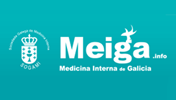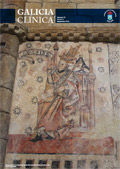Abstract
ABSTRACT
Background and objectives: Independent validations of the ABCD2 score used to predict stroke development have reported conflicting results, yet expert opinion as to proper diagnostic approach and best treatment differs widely. A model predictive power can be modified by the concomitant use of effective diagnostic and pharmacological treatments. We aimed to determine the predictive power of the ABCD2 score while simultaneously providing patients with current urgent recommended treatments and recording their early and long term health outcomes.
Methods: Data was retrospectively collected from all the patients presenting with a TIA for a whole year and were followed for another whole year. Physicians completed data forms with the ABCD2 score when patients arrived at the emergency department (ED).We calculated sensitivity, specificity for predicting stroke at 7 and 30 days after visiting the ED using the high-risk cutpoint of an ABCD2 score ≥ 4.Univariate Cox proportional hazards regression modelling was performed for ABCD2 score to estimate the hazard ratios relative to the low-risk category and to assess the effect of the individual components of the ABCD2 score and other potential risk factors to predict stroke development.
Results: We enrolled 172 patients (mean age 71 yr, 51 % women) with a new incident diagnosis of TIA. The mean (SD) ABCD2 score was 4.2 (1.4). There were 12 new TIA, 21 non fatal strokes and 3 fatal strokes. Intrahospital mortality was 1.7% and 12% during the 1 year follow up. An ABCD2 score of ≥ 4 had a sensitivity of 88% and 82 % for a stroke at 7 and 30 days respectively, with a poor specificity of 30%. Negative predictive value at 7 days was 98%. ABCD2 score ≥ 4 had no significant predictive value for stroke within 7 days (hazard ratio [HR], 3.49; 95%CI, 0.42 to 27.93) and 30 days (HR, 1.97; 95%CI, 0.43 to 9.13) of the event. Only diabetes predicted an increased likelihood of stroke over the first week (HR, 5.47; 95%IC 1.43 to 20.95) and over the first month (HR, 3.60; 95%IC 1.08 to 12).
Conclusions: The accuracy of the ABCD2 score fails to help us make treatment decisions except for its negative predictive value (98%). It was only being diabetic that was significantly related to the probability of stroke development. TIA probably justifies early accurate identification of the underlying TIA etiology for nearly all presentations. We recommend adding a systematic Brain CT, carotid ultrasound and ECG within 24 hours while concomitantly starting urgent treatment.
RESUMEN
Introducción y objetivo: Las validaciones de la escala ABCD2 para predecir un Ictus después de un AIT han sido contradictorias y la opinión de los expertos sobre cual es mejor método de diagnostico y tratamiento son muy variables. Ademas los el poder predictivo de las escalas puede variar mucho si al mismo tiempo se usan procesos diagnósticos y terapéuticos efectivos en variar el curso de la enfermedad. Nuestro objetivo es evaluar el poder predictivo real de la escala ABCD2 cuando al mismo tiempo a los pacientes se les somete a métodos diagnósticos adecuados y tratamientos efectivos urgentes.
Metodología: Se recogieron de manera retrospectiva todos los pacientes que acudieron a un hospital terciario durante un año y fueron seguidos prospectivamente durante 1 año. Los datos de la escala ABCD2 fueron los que presentaban al momento de llegada a urgencias. Calculamos cual era la sensibilidad, especificidad y poder discriminatorio de una puntuación ≥ 4 para predecir la aparición de un Ictus a los 7 y 30 días. Se aplicó un modelo de regresión univariante de Cox a la escala ABCD2 para estimar el cociente de riesgo correspondiente a la categoría de bajo riesgo y valorar la capacidad predictiva de ictus de sus componentes individuales y de otros potenciales predictores de riesgo.
Resultados: Incluimos 172 pacientes ( edad media 71 años, 51% mujeres) con un nuevo diagnostico de AIT. La puntuación media de la escala ABCD2 fue de 4.2 ± 1.4. Se produjeron 12 nuevos AIT, 21 Ictus no fatales y 3 ictus fatales durante el seguimiento. La mortalidad intrahospitalaria fue del 1.7% y la total durante el seguimiento de 1 año del 12 %. Una puntuación en la escala de ABCD2 de ≥ 4 tenia una sensibilidad del 88% y del 82% para predecir un ictus a los 7 y 30 días respectivamente, con una pobre especificidad del 30%.El valor predictivo negativo a 7 dias fue del 98%. Una puntuación ABCD2 ≥ 4 no tuvo valor predictivo significativo de ictus a los 7 días (hazard ratio [HR], 3.49; 95%CI, 0.42 to 27.93) ni a 30 días (HR, 1.97; 95%CI, 0.43 to 9.13). Como componente individual, solo la diabetes predijo la probabilidad de desarrollar un ictus en la primera semana (HR, 5.47; 95%IC 1.43 to 20.95) y durante el primer mes (HR, 3.60; 95%IC 1.08 to 12).
Conclusiones: El poder discriminativo de la escala ABCD2 no ayuda a tomar decisiones de tratamiento salvo por su valor predictivo negativo del 98%. Solo la variable diabetes de la escala se asocio con una probabilidad relevante de tener un ictus.Probablemente cualquier tipo de presentación de AIT justifica la búsqueda rápida de la etiologia subyacente. Consideramos que en el AIT, independientemente de la escala ABCD2 , se debe realizar en menos de 24 horas un TAC cerebral, ECG, e imagen de carótida, mientras al mismo tiempo se inicia tratamiento preventivo urgente.
© 2015 Galicia Clínica.
Complete article | Pdf article


